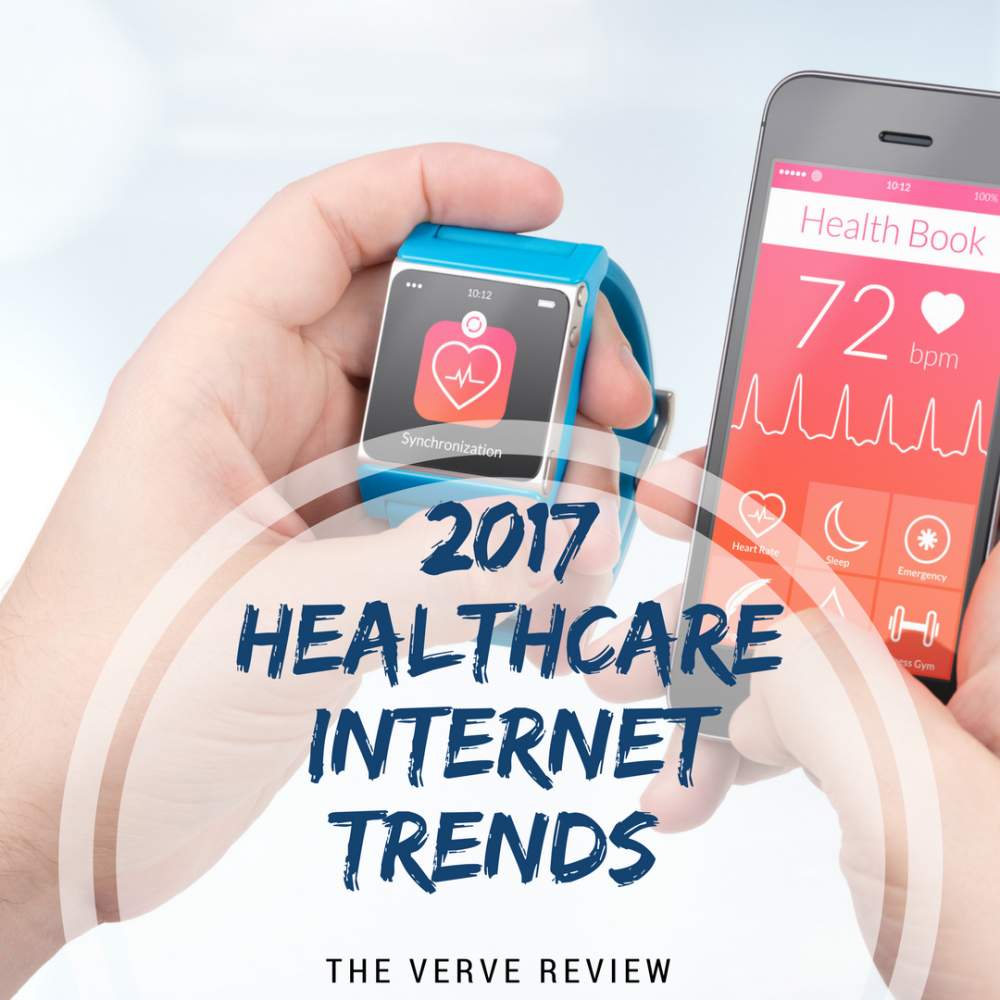2017 healthcare internet trends – Verve review

Mary Meeker, venture capitalist partner of KPCB, recently presented a comprehensive report about the 2017 Internet trends. It is nothing new that the internet is playing an increasingly more important role in our lives – both personal and professional.
You could find plenty of reports and articles about how the internet influences us. But in this post, I would like to focus on a very specific aspect. There is fewer coverage about it, and it really interests us at Verve as marketing and healthcare professionals.
I’m referring to the internet trends in the healthcare industry.
Mary Meeker dedicates an entire chapter to this topic, and you can find here our own review.
Rapid growth in sources of digital health data
Professionals in the healthcare industry can record and access an increasing number of digital health data. Many more people worldwide are using wearables that capture various – and fast increasing – amounts of information.
The most common sensor is the accelerometer, which registers the acceleration of wearers when they walk and run, with 80% of wearables having this technology. It has been part of smartphone technology since 2010. The second and third most common sensors are heart rate and GPS, but others can include information such as the amount of light a person is exposed to and a thermometer.
What is even more interesting is that more and more people seem to be willing to share their data with tech companies. We have always wondered whether this is less of a willingness and more of not knowing that they are sharing! This report tells us that more than half of respondents would share their health data with Google, Microsoft, Samsung, and Apple, and 39% would share them with Facebook.
This presents clear opportunities to healthcare professionals and researchers, who can access more precise data to make a diagnosis and can propose personalised treatments. It also presents interesting opportunities from a marketing point of view, as we can now communicate with customers in many more, personalised ways. At the same time, though, the tech companies that gain this data and the healthcare professionals who use it need to be aware of possible ethical issues.
Data accumulation
After reading this, it should come as no surprise that health-related apps are one of the fastest growing in development. In Feb 2017 there were more than 165,000 health related apps on the Apple store. 24% of these apps are related to disease and treatment, which are second in popularity only to fitness apps.
While this could present clear marketing opportunities, it may also mean that more and more people may be willing to use these apps as a substitute to visiting their GP which, we feel, could have possible worrying implications. Many of these apps have been criticised as they are not based on sound science or evidence based.
The expansion of research and clinical trials
A positive influence of the Internet in the healthcare industry is the relative simplicity of conducting researches and clinical trials. It is much easier today to conduct extensive studies and share those results with the wider scientific community. According to the study, the number of clinical trials have more than quadrupled in the last 10 years.
For example, it is now possible to conduct a two-month study using 30 years of data on 50,000 patients. Using traditional research methods, it would have taken seven years to gather only seven years of data and on only around 3,000 patients.
Faster innovation cycles
Consumers of all ages are now more and more expecting to be able to use digital health services. People are also generally more willing to start using new digital devices – even the older generation who have done an about-turn on their resistance to technology change.
This is welcome news for us at Verve, as it enables entirely new ways to communicate in the world of healthcare – both to consumers/patients and to healthcare professionals. We are being challenged, quite rightly, to come up with more and more innovative ways to position or promote healthcare products and to interact with individuals.
We believe this does NOT mean that traditional communication methods have become redundant, actually far from it.
We always encourage our clients to embrace this view and make a synergistic use of both traditional and digital communication channels. Digital may be quick, it may be sexy, it may even be cheaper but it may not be more effective. We still work on many different printed POS and direct mail campaigns – and some of them are performing better than ever before!
And we have also recognised the completely new way in which traditional campaigns can be integrated with new technological tools. It’s an exciting world.
I hope you have found interesting this review of the 2017 Internet trends in the healthcare industry.
You can find here the full presentation.
